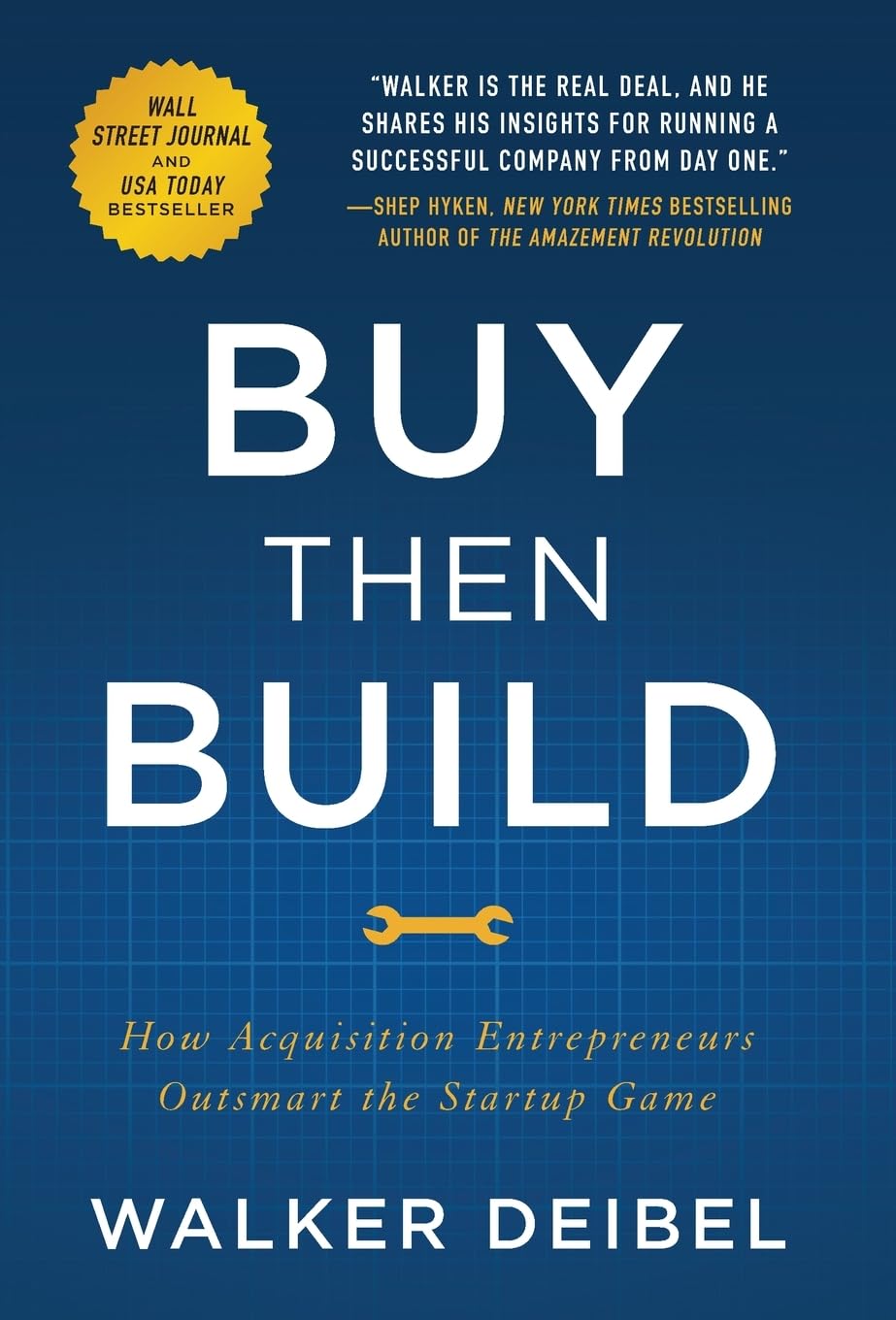Deibel begins by challenging the myth of the traditional startup. He argues that the startup world is fraught with challenges, with failure rates notoriously high due to untested ideas, lack of market validation, and capital constraints. In contrast, buying an established business allows entrepreneurs to start with a proven model, a customer base, and existing cash flow, significantly reducing risk.
The book introduces the concept of acquisition entrepreneurship, where entrepreneurs focus on acquiring businesses that align with their goals, skills, and vision. Deibel emphasizes that buying a company is not about taking over a failing operation but acquiring a healthy, cash-flowing enterprise that offers opportunities for improvement and growth.
A core theme of Buy Then Build is the entrepreneurial advantage gained through acquisitions. Deibel illustrates how buying a business allows entrepreneurs to skip the painstaking early phases of building something from scratch, such as market research, brand creation, and customer acquisition. Instead, acquisition entrepreneurs can focus on scaling and improving a functional business, leveraging their skills to add value.
The book provides practical advice on identifying and evaluating acquisition targets. Deibel outlines key criteria: profitability, industry trends, scalability, and alignment with the buyer’s expertise. He introduces tools and frameworks for assessing financial statements, understanding business valuations, and negotiating purchase agreements. The goal is to empower readers to navigate the acquisition process confidently.
One of the standout sections of the book is Deibel’s explanation of financing options for acquisitions. Many prospective buyers may hesitate to pursue acquisition entrepreneurship due to concerns about funding. Deibel demystifies this by discussing strategies such as SBA loans, seller financing, and leveraging private investors, showing that buying a business is accessible to a broader audience than expected.
Another significant focus is on transitioning ownership. Deibel stresses the importance of effectively integrating into the acquired business, maintaining existing customer relationships, and winning the trust of employees and stakeholders. He also highlights the value of retaining the business’s culture and systems while introducing performance innovations.
Throughout the book, Deibel shares real-life examples and case studies of entrepreneurs who successfully bought and grew businesses. These stories demonstrate the transformative potential of acquisition entrepreneurship and offer insights into overcoming common challenges.
In conclusion, Buy Then Build provides a compelling case for why acquisition entrepreneurship is a viable, lower-risk path to business ownership. By focusing on buying established businesses, entrepreneurs can accelerate their journey to profitability, scale efficiently, and achieve financial freedom. Walker Deibel’s actionable strategies, tools, and mindset make this book an essential read for aspiring entrepreneurs seeking a smarter way to enter the world of business ownership.
